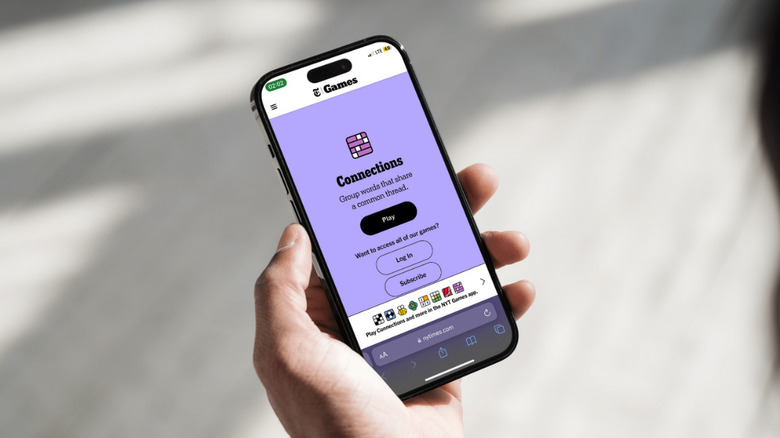Understanding and Utilizing connections hint: A Comprehensive Guide

In today’s interconnected world, the concept of “connections” transcends mere relationships. Whether in professional networking, personal relationships, or digital communication, the ability to make meaningful connections is crucial for success. In this article, we will explore the idea of “connections hint,” delving into what it means, how to foster connections, and the tools and strategies you can use to enhance your networking skills.
What Are Connection Hints?
“Connection hints” refer to subtle cues or indicators that suggest a potential relationship or partnership could be beneficial. These hints can manifest in various forms, including body language, social media interactions, mutual interests, and shared experiences. Recognizing and acting on these hints can lead to fruitful relationships, collaborations, and opportunities.
The Importance of Connection Hints
In any setting—be it personal, academic, or professional—recognizing connection hints can significantly impact the way we interact with others. Here are a few reasons why understanding these cues is essential:
- Building Relationships: Connection hints can help identify individuals who share your interests or goals, facilitating the establishment of meaningful relationships.
- Opportunities for Collaboration: In professional contexts, recognizing these hints can lead to partnerships that enhance creativity and innovation.
- Enhanced Communication: Understanding connection hints allows for more effective communication, as you can tailor your approach based on the cues you observe.
- Career Advancement: In the workplace, being attuned to connection hints can open doors to promotions, mentorships, and networking opportunities.
Identifying Connection Hints
Recognizing connection hints requires keen observation and awareness. Here are some common indicators to watch for:
1. Body Language
Body language is a powerful form of non-verbal communication. Here are some signs that someone may be interested in connecting:
- Eye Contact: Sustained eye contact can indicate interest and engagement.
- Open Posture: An open stance, with arms uncrossed and body oriented toward you, suggests receptiveness.
- Mirroring: If someone mimics your gestures or posture, it often indicates rapport.
2. Social Media Interactions
In the digital age, social media is a vital tool for recognizing connections hint. Pay attention to:
- Likes and Comments: Frequent interactions on your posts can signify a desire to connect.
- Shared Content: If someone shares articles or content that aligns with your interests, it may be a hint for deeper conversation.
3. Shared Interests and Experiences
Common interests are often the foundation for connections. Look for:
- Mutual Hobbies: Engaging in discussions about shared interests can spark deeper connections.
- Professional Background: Similar career paths or educational backgrounds can provide a common ground.
4. Verbal Cues
Sometimes, hints come in the form of spoken words. Listen for:
- Questions about Your Work or Life: If someone shows curiosity about your projects or interests, it indicates a desire to engage.
- Expressions of Similar Experiences: When someone shares their experiences that align with yours, it can be a sign of interest in forming a connection.
Strategies for Fostering Connections
Once you’ve identified connection hints, the next step is to cultivate these relationships. Here are some effective strategies:
1. Be Approachable
Creating a welcoming atmosphere is essential for encouraging connections. Here’s how:
- Maintain Open Body Language: Stand or sit in a way that invites conversation.
- Smile and Make Eye Contact: A genuine smile and eye contact can make others feel comfortable approaching you.
2. Initiate Conversations
Don’t wait for others to make the first move. Here are ways to start conversations:
- Ask Open-Ended Questions: Encourage dialogue by asking questions that require more than a yes or no answer.
- Comment on Shared Experiences: Reference common interests or experiences to establish rapport.
3. Follow Up
After an initial interaction, following up is crucial for building a lasting connection:
- Send a Message: A brief note thanking someone for a conversation or expressing interest in their work can solidify a connection.
- Share Relevant Content: If you come across an article or resource that might interest them, sharing it can deepen the relationship.
4. Attend Networking Events
Participating in events allows you to meet new people and recognize connections hint in real-time:
- Workshops and Conferences: Attend industry-related events where you can meet like-minded individuals.
- Social Gatherings: Engage in social events to expand your network casually.
The Role of Technology in Connections
In today’s digital landscape, technology plays a significant role in enhancing connections. Here are a few tools and platforms that can help:
1. Social Media Platforms
- LinkedIn: A powerful networking tool for professionals, LinkedIn allows you to connect with industry peers and engage in meaningful discussions.
- Twitter: Follow industry leaders and participate in relevant conversations to broaden your network.
2. Networking Apps
Several apps facilitate professional networking:
- Meetup: This platform helps you find groups of people with similar interests, allowing for in-person connections.
- Bumble Bizz: An extension of the Bumble app, Bumble Bizz is designed for professional networking.
3. Online Communities
Participating in online forums and communities can help you identify and act on connections hint:
- Reddit: Subreddits related to your interests can provide insights and opportunities for engagement.
- Facebook Groups: Join groups that focus on your hobbies or profession to meet like-minded individuals.

Overcoming Challenges in Making Connections
While fostering connections can be rewarding, it can also present challenges. Here are some common hurdles and strategies to overcome them:
1. Social Anxiety
Feeling anxious in social situations is common. Here’s how to cope:
- Prepare Topics: Having a few conversation starters can ease anxiety.
- Practice Mindfulness: Techniques like deep breathing can help ground you before engaging in conversations.
2. Misreading Cues
Sometimes, connection hints can be ambiguous. To navigate this:
- Ask for Clarification: If you’re unsure about someone’s interest, politely ask questions to gauge their engagement.
- Be Observant: Continuously pay attention to verbal and non-verbal cues to refine your understanding.
3. Time Constraints
In a busy world, finding time to connect can be challenging. Here are solutions:
- Schedule Networking Time: Dedicate specific times in your week for networking activities.
- Utilize Online Tools: Use social media and networking apps to connect more efficiently without time constraints.
Conclusion
In an increasingly interconnected world, understanding and utilizing connection hints is essential for personal and professional growth. By honing your ability to recognize these hints and employing effective strategies to foster relationships, you can create a robust network that opens doors to countless opportunities.
Embrace the art of connection, whether through body language, shared interests, or digital platforms. With patience and practice, you can transform fleeting interactions into meaningful relationships that enrich your life. So, take the first step—recognize the hints, engage with others, and watch as your network flourishes. Whether in the workplace or your personal life, the power of connection is at your fingertips, waiting to be harnessed.





